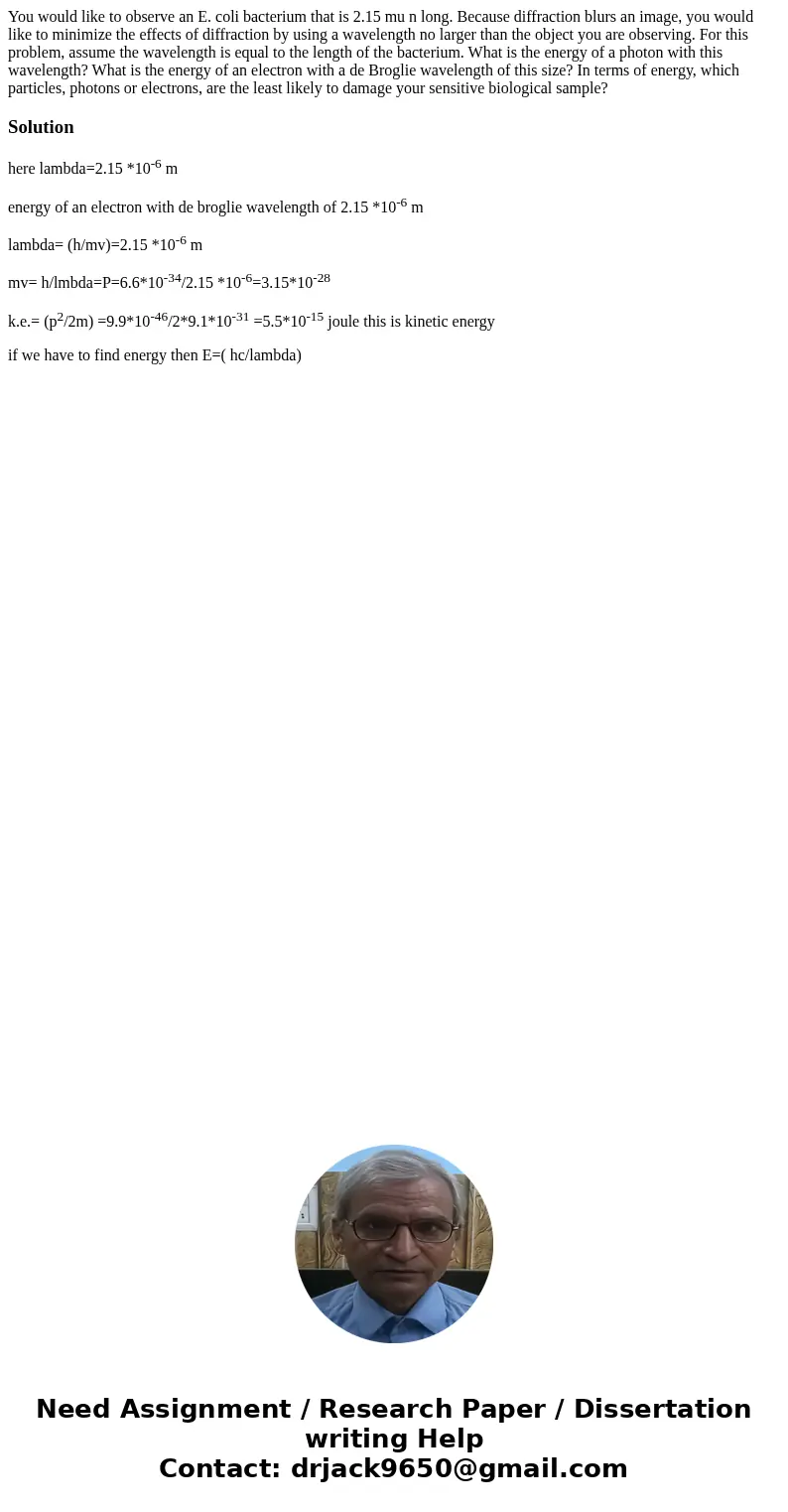You would like to observe an E coli bacterium that is 215 mu
You would like to observe an E. coli bacterium that is 2.15 mu n long. Because diffraction blurs an image, you would like to minimize the effects of diffraction by using a wavelength no larger than the object you are observing. For this problem, assume the wavelength is equal to the length of the bacterium. What is the energy of a photon with this wavelength? What is the energy of an electron with a de Broglie wavelength of this size? In terms of energy, which particles, photons or electrons, are the least likely to damage your sensitive biological sample? 
Solution
here lambda=2.15 *10-6 m
energy of an electron with de broglie wavelength of 2.15 *10-6 m
lambda= (h/mv)=2.15 *10-6 m
mv= h/lmbda=P=6.6*10-34/2.15 *10-6=3.15*10-28
k.e.= (p2/2m) =9.9*10-46/2*9.1*10-31 =5.5*10-15 joule this is kinetic energy
if we have to find energy then E=( hc/lambda)

 Homework Sourse
Homework Sourse